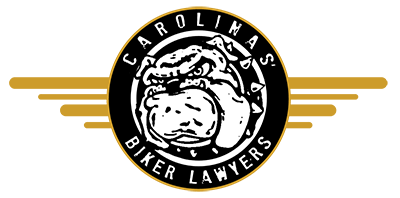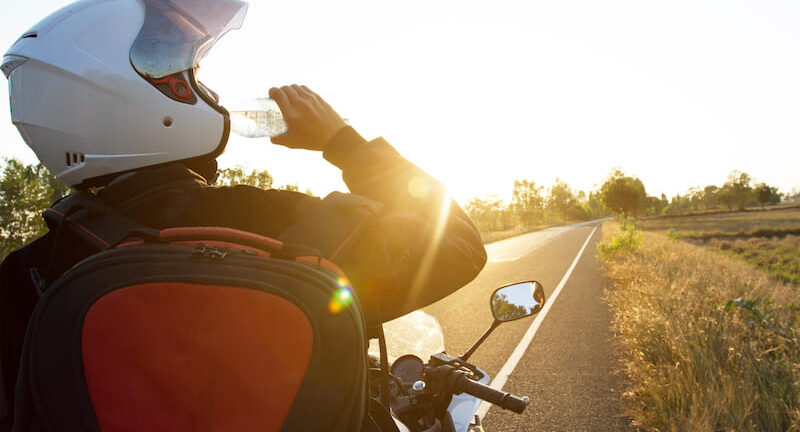Dehydration, heat exhaustion, and even heat stroke is very common in intense heat and can put you at increased risk of an accident on a motorcycle. Heat can hurt you, and can even kill you, if you’re not prepared.
Riding in Extreme Heat
There are a few factors working against bikers when riding in extreme heat. At temperatures exceeding 93 degrees the convection effect intensifies the heat, forcing your body to work overtime by sweating to keep itself cool. But heavy sweating is often less noticeable on a motorcycle because it evaporates more quickly in the rushing air. You can be sweating profusely, dehydrating your body very quickly, and actually accelerating the effects of heat exhaustion – all without even noticing.
To make matters worse, asphalt roads collect and radiate heat making the air above the highway even hotter than ambient temperatures. When you add that to the heat already being generated by your bike, it can become a recipe for heat injury very quickly.
Types of Heat Stress Injuries
- Heat Rash – red raised rash, impairs sweating and decreases effectiveness of sweating
- Heat Cramps – muscle cramps, pains or spasms in the abdomen, arms or legs
- Heat Exhaustion – moist, clammy skin, dilated pupils, dizziness, confusion, nausea, weak pulse, rapid breathing
- Heat Stroke – dry, red, hot skin, pupils constricted, very high body temperature, dizziness, confusion, nausea, rapid pulse, unconsciousness
Be Prepared and Take Precautions
The key to preventing heat injury is preparation. Most often, heat injuries occur when someone is unprepared and tries to ride through it. To avoid heat stroke while riding a motorcycle, you can take the following precautions:
- Stay hydrated: Drink plenty of water before, during, and after your ride.
- Dress appropriately: Wear lightweight, breathable, and moisture-wicking clothing that allows airflow to your body. Consider wearing a motorcycle jacket with ventilation panels or a mesh design to promote air circulation.
- Take breaks: Plan regular rest stops during long rides to give yourself time to cool down. Find shaded areas or air-conditioned spots where you can take short breaks and lower your body temperature.
- Avoid riding during the hottest parts of the day: If possible, schedule your rides during the cooler parts of the day, such as early morning or evening.
- Avoid alcohol and caffeine: These can contribute to dehydration, so it’s best to avoid them before and during your ride. Stick to water or other non-alcoholic, non-caffeinated beverages to stay properly hydrated.
Remember, heat stroke is a serious medical condition that requires immediate attention. If you or someone you’re riding with shows signs of heat stroke (hot, dry skin; confusion; loss of consciousness), call emergency services right away.
Stay safe and enjoy your rides while keeping yourself protected.
Karney|Clayton has been representing injured bikers since 1975. With a clear understanding of the obstacles motorcyclists face both on the road and in the courtroom, our attorneys fight for motorcycle accident victims. Protecting bikers throughout the Carolinas with offices in Charlotte, Greensboro and Raleigh. From accident through recovery, we’ve got your back. Contact us for your free consultation 877-376-7982.
Disclaimer: All data and information provided on this blog is for general informational and entertainment purposes only and should not be considered legal advice. Karney|Clayton will not be liable for any errors or omissions, or any losses, injuries, or damages arising from its display or use. Karney|Clayton is not responsible for any third-party contents which are accessible through this blog.

